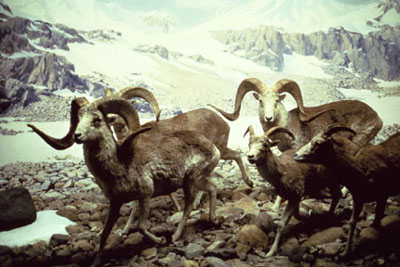

 The Accurate Reloading Forums
The Accurate Reloading Forums  THE ACCURATE RELOADING.COM FORUMS
THE ACCURATE RELOADING.COM FORUMS  Hunting
Hunting  Asian Hunting Forum
Asian Hunting Forum  Here’s How Much Gilgit Baltistan Earned Through Markhor Trophy Hunting
Here’s How Much Gilgit Baltistan Earned Through Markhor Trophy HuntingGo  | New  | Find  | Notify  | Tools  | Reply  |  |
| one of us |
https://propakistani.pk/2024/0...khor-trophy-hunting/ LINK HAS PHOTOS. Here’s How Much Gilgit Baltistan Earned Through Markhor Trophy Hunting By Sher Alam | Published May 9, 2024 | 6:38 pm The picturesque region of Gilgit-Baltistan has concluded its annual trophy hunting season of markhors, blue sheep, and ibexes for 2023-24, which spanned from November to April, generating Rs. 300 million in revenue. Regulated under the stringent provisions of the Gilgit Baltistan Wildlife Act of 1975, the trophy hunting program aims to balance wildlife conservation with sustainable economic development. In October 2023, the department conducted an auction, issuing permits to hunt over a hundred rare species, as part of its strategic trophy hunting program. The auction garnered attention both domestically and internationally, with permits fetching impressive sums, particularly for coveted species like the Astore markhor. Known for its majestic horns and elusive nature, the Astore markhor permits commanded substantial prices, with the highest bid reaching $186,000 (Rs. 52 million). Other permits for Astore markhors fetched amounts ranging from $171,000 (Rs. 48 million) to $181,000 (Rs. 50 million). Additionally, permits for blue sheep and ibexes were also in demand, selling for prices between $26,000 (Rs. 7 million) and $35,000 (Rs. 9 million). Despite the competitive bidding, by the conclusion of the season, a total of 51 Himalayan ibex, 6 blue sheep, and 4 Astore markhor trophies were hunted, generating a total trophy hunting fee of roughly Rs 30.9 million. This revenue is crucial for both conservation efforts and community development initiatives in the region. The Gilgit-Baltistan government ensures that 80% of the income generated from trophy hunting is allocated to the respective community-controlled hunting areas, with the remaining 20% designated for governmental use. Within the community, funds are distributed through organized events with formal cross-checking, ensuring transparency and accountability. Of the government’s share, 20% is earmarked for improving wildlife habitats, while the remainder is allocated to public development projects within the respective areas. The success of the trophy hunting program underscores the collaborative efforts between local communities, governmental authorities, and conservationists. By leveraging sustainable hunting practices, Gilgit-Baltistan not only safeguards its valuable wildlife but also promotes economic growth and community welfare. The trophy hunting program in Gilgit-Baltistan, which began in the Nagar Valley in 1990, has since expanded to other areas within the region. Despite global controversies surrounding trophy hunting, proponents argue that such programs help prevent poaching, empower local communities, and contribute to wildlife conservation efforts. Kathi kathi@wildtravel.net 708-425-3552 "The world is a book, and those who do not travel read only one page." | ||
|
| Powered by Social Strata |
| Please Wait. Your request is being processed... |
|
 The Accurate Reloading Forums
The Accurate Reloading Forums  THE ACCURATE RELOADING.COM FORUMS
THE ACCURATE RELOADING.COM FORUMS  Hunting
Hunting  Asian Hunting Forum
Asian Hunting Forum  Here’s How Much Gilgit Baltistan Earned Through Markhor Trophy Hunting
Here’s How Much Gilgit Baltistan Earned Through Markhor Trophy Hunting

Visit our on-line store for AR Memorabilia

